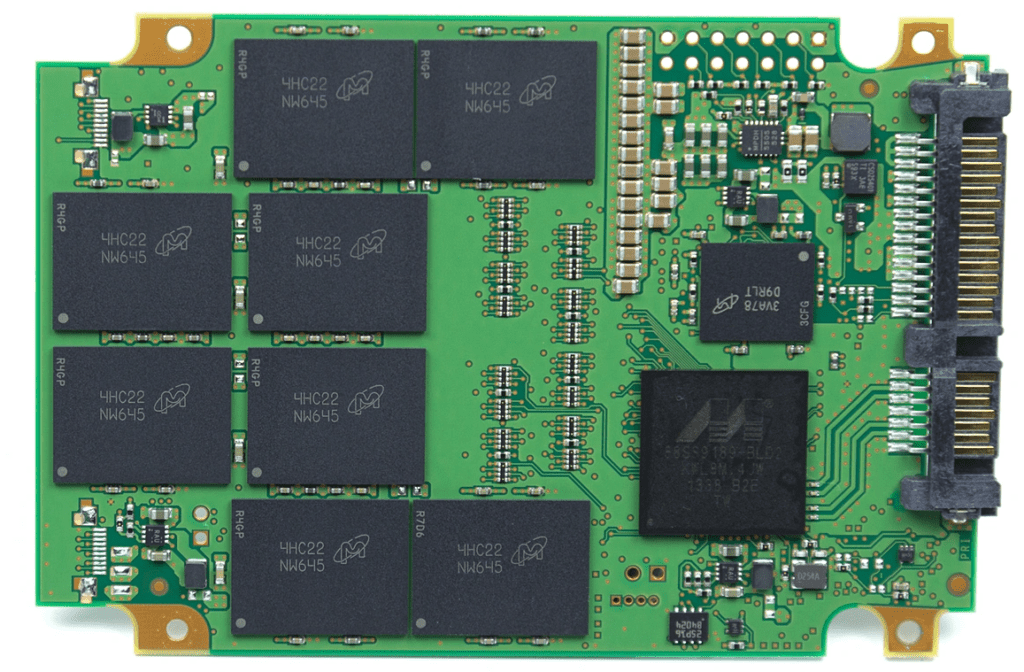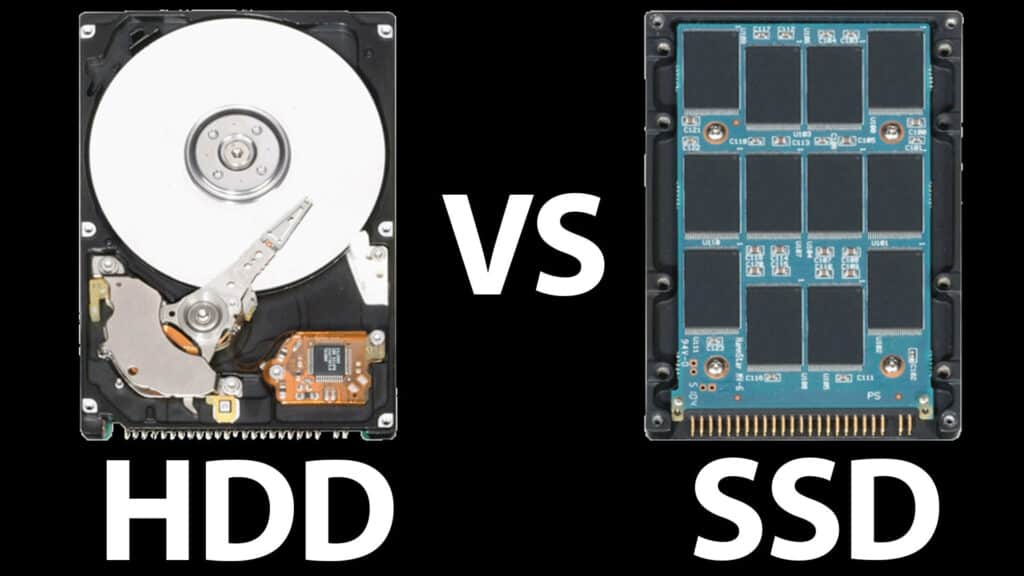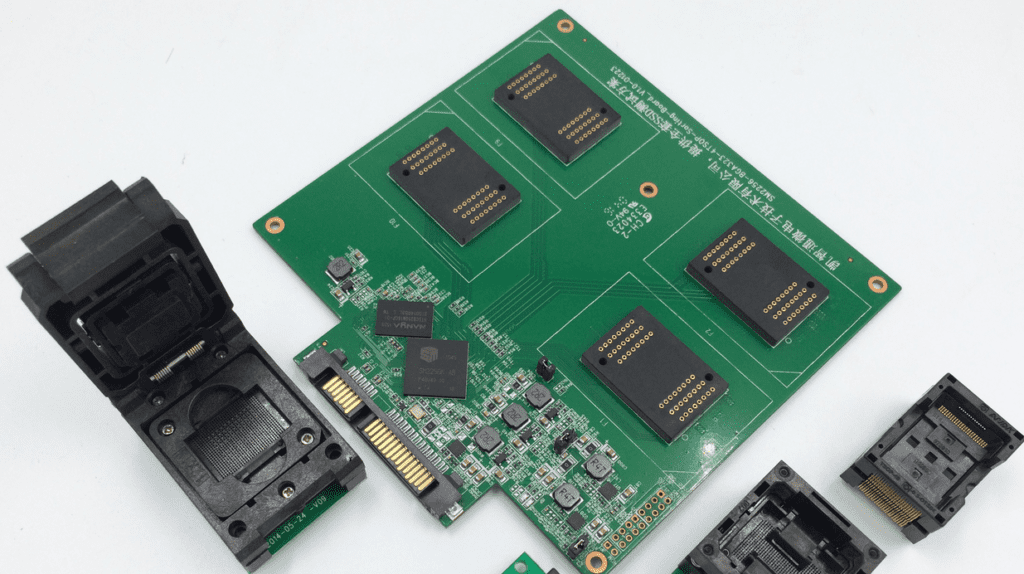The modern customer is a savvier, more discerning breed than its predecessors. It is not enough that solid-state drives (SSDs) are quicker than hard drives, are completely silent, generate less heat, are substantially more durable, and extend the battery life of laptops.
Today’s buyer always wants to know the “how” and “why” behind a product or service.
In this blog, we will discuss and learn about different types of SSDs, their functions, and their uses. We will also discuss the difference between SSD and HDD.
Let’s start with what is a solid-state device.

What is the working principle and Different Types Of SSD PCB layout?
In the world of solid-state drives (SSDs), terms like mSATA and PCIe are just two among many. There is a required interface for connecting an SSD to the motherboard or system. If you’re looking for information on the most popular SSD integrations, you’ve come to the right place.
· NVMe and PCIe SSDs:
In most cases, high-performance devices such as video cards, network interface controllers, and motherboards are linkable together via PCI Express (PCIe). Connect them if you need lightning-fast data transfer between your solid-state drive (SSD) and the random-access memory (RAM). The Nonvolatile Storage Express protocol, upon which PCIe-connected SSDs are present, allows for a raw capacity of up to 32 Gigabytes/s and a sustained capacity of up to seven Gbps.
· SATA III, mSATA III, and conventional SSDs:
Among the older interfaces for SSDs, SATA is the most common. It supports data transfer rates of up to 6 Gigabytes/s. Replace the SATA with the much speedier NVMe. However, upgrading to a SATA-based solid-state device would still be useful for older laptops and PCs with hard drives.
Storage capacities of solid-state drives (SSDs) range from about 120 Gigabytes to 30 Terabytes in the consumer market. Today’s standard SSDs typically range in size from 250 to 500 Gigabytes, which is more than enough room for Windows, the majority of your apps, and your data.
What’s the difference between HDDs and SSDs?
SSDs store and retrieve data using digital flash storage and memory chips. Hard disks rely on moving parts and mechanical motors. The write/read heads and spinning disks are examples of mechanical motors. Hard disk drives (HDDs) have a wide range of applications in PC storage. At the same time, solid-state drives (SSDs) are still relatively new.
As a rule, solid-state drives are preferable. They can run faster, shed more weight, and live longer. But HDDs aren’t going away anytime soon. They are less expensive and still able to provide more storage space than current SSDs. But that won’t last forever. The moment to switch to an SSD from a hard disk drive is when you have to reconfigure your hard drive because something bad happened with your computer.
Manufacturing SSD PCB becomes easy
You can order a complete SSD from Micron. From fabricating silicon chips into flash storage to constructing PCBs to manufacturing the final goods. Everything is possible in-house. Products undergo extensive reliability and quality testing before shipping them to clients all around the world.
Making solid-state drive (SSD PCB)
Assemble the solid-state drive from a number of computer chips on a printed circuit board. Similar to how it creates its memory module. Micron produces flash storage devices together on silicon chips.
Due to their susceptibility to contamination, silicon wafers are moveable by robots through an extensive process. The process includes more than 800 actions that take over a month. Wafers have numerous layers of materials added to them as they progress through the operation. Compounds like copper, which conduct electricity, and elements like silicon dioxide, which do not, are examples.
Wafers are exposable to ultraviolet light through glass stencils depicting the electric circuit design after the deposition of each power layer. Materials decompose and dissolve at the points of contact with light. The circuitry layout on the chip is printable by protecting the areas where the elements are useful with a stencil. The residue is removable using chemical baths.
Each thirty-centimeter wafer produces hundreds of wafers after printing. Following dissection, the chips are placeable inside a plastic enclosure.
Apply the tin alloy solder paste to large circuitry at the attachment points for computer chips and other equipment. The parts are attachable by a robot, and then the boards bake in a microwave to fuse the parts to the board.
SSD controller quality
First, an optical scanner checks that all of the components are in their proper slots, and then an x-ray machine checks that every component has soldered properly. The massive circuit boards are sliceable into separate circuits and, in the context of a 2.5-inch disk, put into a plastic casing.
Then the serial and model numbers, together with the drive’s technical characteristics, are printable on the labels. Additionally, a bar code helps in keeping track of the manufacturing process. The drives get checked for operation, and the operating system (firmware) is installed when they are connected to a tester. The drive is then put through rigorous performance monitoring for up to sixty hours to make sure it can write and read data at the specified speeds and that it saves information correctly. Micron’s solid-state drives (SSDs) are thoroughly tested with numerous motherboards to guarantee broad compatibility.
To prevent static electricity, the disks are then packed in a foil sack in a carton. They can be sent to any country from there.
A drive from the ground up
Micron is among the few companies that fabricate entirely silicon-based solid-state SSDs. The drives are assured thanks to rigorous first-to-last-stage quality checks; with the Crucial® AdvisorTM or System Scanning tools, you can determine the optimal drive type, interface, and capacity for your specific setup.
Advantages and uses of Best SSD PCB

SSDs have applications in all portables and desktops for the persistent storing of data. The data is not lost when the device is powered down. Since SSDs are lighter and smaller than hard disks, they allow for more creative freedom in the design of computers.
Early adopters of solid-state drives (SSDs) were computer enthusiasts and developers working on high-performance technologies, where SSDs’ high throughput and low accessing times were deemed worthwhile. However, they are now the default drive type in most common desktops and laptops with lower price tags.
SSD PCBs have specific advantages in the same form factors:
1. Business:
Businesses rely heavily on SSDs because of the vital importance of file-transfer rates and access times for their operations involving large volumes of data (such as data management organizations, programming environments, and financial institutions).
2. Gaming:
Computers built specifically for playing games have always been on the cutting edge of technological development, often selecting equipment with more costs in order to improve their performance in this area. This is especially true with regard to storage space, as most modern games are continually reading and writing data (maps, textures, characters, levels). SSDs have replaced traditional hard drives in modern gaming systems like the PlayStation five and Xbox One Series X.
3. Mobility:
When it comes to portability, SSDs shine because of their ability to extend the life of a laptop or tablet’s battery. SSDs are also shockproof, protecting user data load from accidental drops.
4. Servers:
Business servers require SSDs for lightning-fast write and read times so they can effectively service client Computers. These also have low budget, resistance, and more durability.
Frequently Asked Questions

In what way do solid-state drives function?
Data in SSDs is saved on an IC, which is a group of circuit boards packed in a single cell of silicon transistors. Storage SSDs are able to store and retrieve non-volatile data thanks to the use of nand flash memory. They are smaller, faster, and more lightweight than standard HDDs and have no moving parts.
Is it preferable to use an SSD or HDD?
Most SSDs play significant role and can outperform standard hard drives (HDDs) in speed, noise, and longevity. Due to their mechanical design, Hard drives are susceptible to breaking down. Also, there is the risk of losing data. Solid-state drives (SSDs) are more resilient and long-lasting gadgets. Due to their higher data transfer rates, solid-state drives (SSDs) are preferable for constructing gaming PCs. However, HDDs are less expensive and frequently provide more storage space.
Can you explain the difference between random access memory and solid-state drives?
The more the SSD capacitance, the more media, apps, and documents you can keep on your gadget and quickly access. More RAM means more applications can be use simultaneously. Balance the Memory (RAM) and solid-state drive (SSD) space for optimal performance.
Can we call a solid-state drive (SSD) a “hard drive”?
While HDDs and SSDs are both useful for storing information on a computer, SSDs are not the same thing. HDDs use rotating drives and other mechanical elements. On the other hand, SSDs are quicker, last longer, and are more robust because they store data in flash storage.
Related posts:
- The Complete Guide to Micro Electronic Assembly and How It is Disrupting the Manufacturing Industry
- Why Blue PCB is Gaining Popularity in the PCB Industry
- What Is The Average Circuit Board Cost, And What Factors Determine The Pricing?
- LTM8033IY#PBF is an EMC-Compatible µModule Buck Converter: Here’s How It Works


